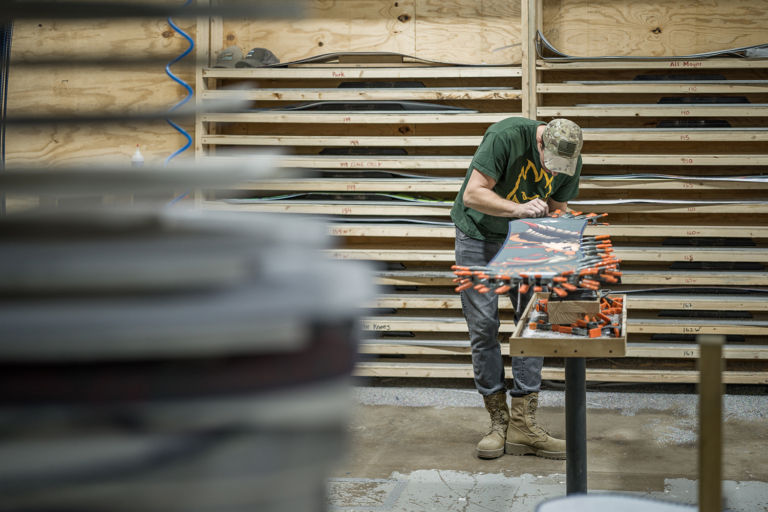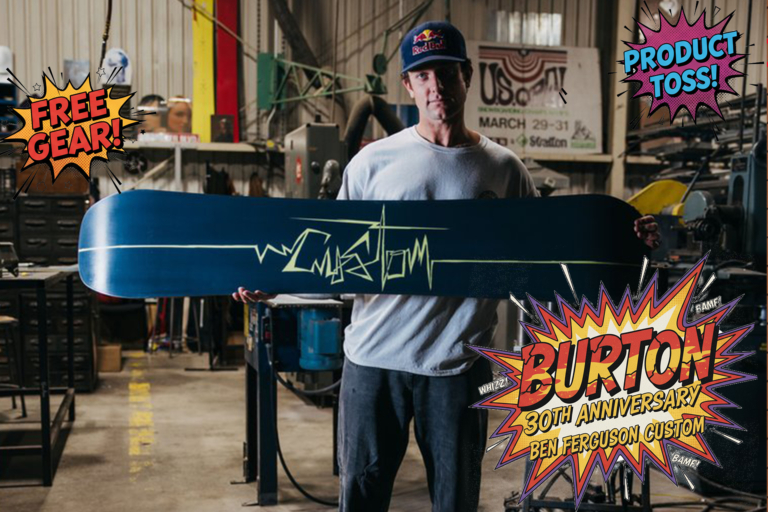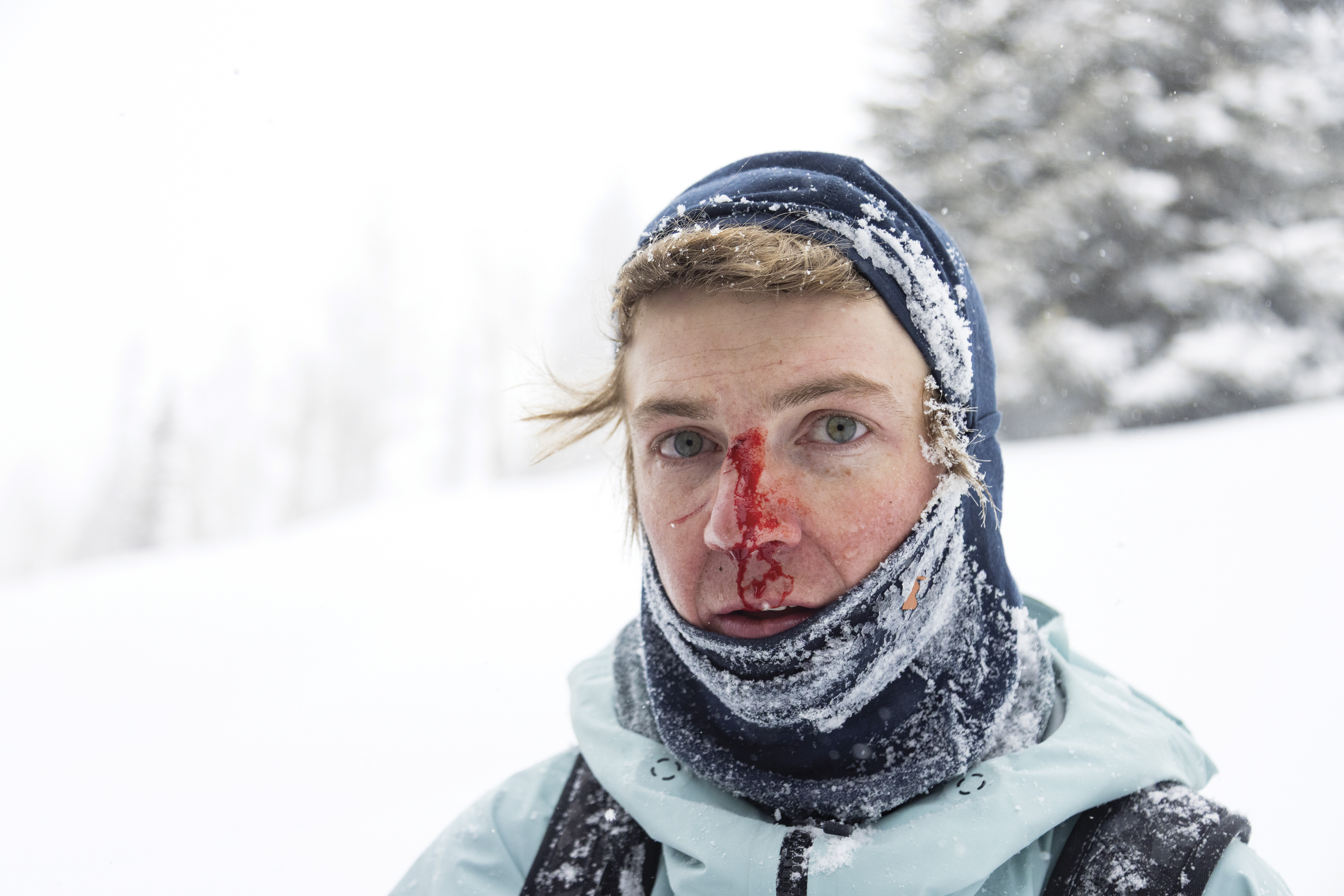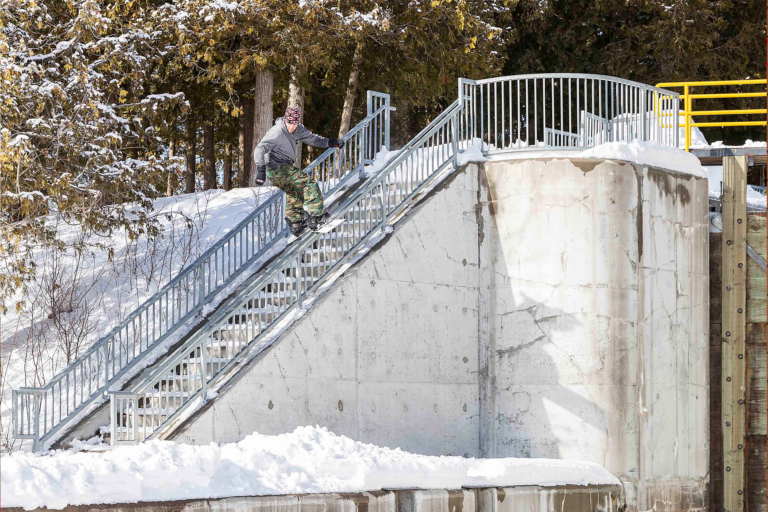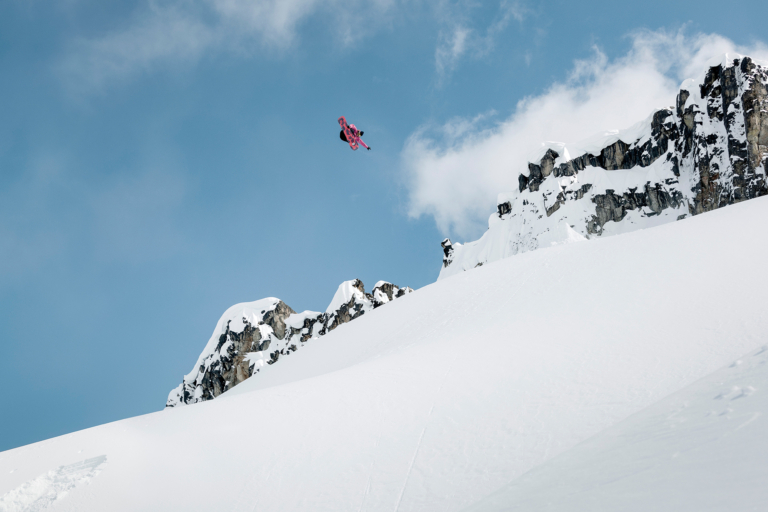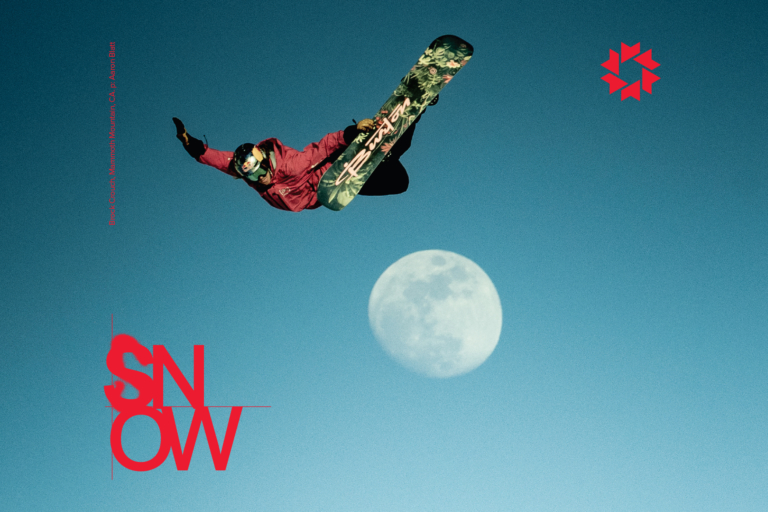In 2016, while living in Colorado and competing in slopestyle events, Kelsey Boyer sustained about a half dozen minor concussions during a two-month period. None of them seemed very consequential at the time. To Kelsey, falls were an accepted part of snowboarding. “I didn’t care. I couldn’t see it,” she recalls. “I didn’t know I was hurting.” During a contest at Winter Park, she had a gnarlier crash. Her goggle lenses flew off. Her nose ring ripped out. But still she felt okay. It wasn’t until two weeks later, on a trip to Jackson Hole, when her friends felt she was acting unusual and having mood swings and Kelsey doesn’t remember the trip at all, that something was clearly wrong. Micah Anderson rushed her to the ER where the doctors discovered that Kelsey’s brain had shifted 11 millimeters and she had a subdermal hematoma. She was rushed to brain surgery.
After her initial recovery, from the outside, Kelsey seemed to be alright. She could walk, talk, and participate in activities she did before her TBI, but inside, her brain was not doing well. She was suffering from countless symptoms that affected her daily life: mood swings, ocular issues, sluggish cognitive functioning, issues with her memory, and problems sleeping. She needed help but was finding few resources outside of traditional medical help, and after years of dealing with her symptoms and seeing no improvement, she needed more.
Finding Kevin Pearce’s foundation, Love Your Brain, was a turning point, as Kelsey was introduced to hollistic treatments that had an immediate effect on how she was feeling. She started researching more and more, finding individuals and treatment centers that helped her immensely. It was then that the idea for Save A Brain began to take shape.
Just over a year ago, Kelsey launched Save A Brain, a non-profit whose mission is to create awareness, provide information and resources, and help educate people on concussion, TBI, preventative care, and the mental and physical health that go along with all of it. The response has been immediate. Athletes from across the board of action and outdoor sports have reached out to Kelsey to share their stories, brands have come on board, and as the topics of TBI, CTE, and mental health are pushed to the forefront in snowboarding, skateboarding, surfing, and beyond, Kelsey and Save A Brain are helping to lead the discussion.
We sat down with Kelsey to learn more about Save A Brain, their mission, and how they are already helping others.
One of your main goals in starting Save A Brain was to provide easily accessible resources to people who have experienced concussion and TBI. What was the landscape like when you were going through your TBI experience and could you expand on your vision for what you hope to provide people through Save A Brain?
There was no landscape as I figured out how to navigate through my TBI experience. Every brain injury is different, so you never know what cards you are going to be dealt, which makes your journey unknown and terrifying. Save A Brain is a creation from the voids that I felt through my recovery. Being able to provide education, encourage prevention, and spread awareness of the long-term mental and physical effects of traumatic brain injuries and concussions is our mission. Along the way, we aim to create a safe space and offer support, because no one should have to walk down this path alone.
Through talking with you, I have learned that TBI experiences can take many forms—one large injury, many injuries that build up over time—and the symptoms of TBI run the gamut and can affect individuals’ daily life so heavily even if it seems like they are okay from the outside. Could you talk a little bit about your experience and what you felt like?
Brain injuries are known as the “invisible injury.” Those two words are filled with so many layers that people cannot comprehend what it is like until you are going through it. My experience was very dark and lonely because I didn’t know how to identify my thoughts, as well as even begin to talk about it. I spiraled into a hole of depression thinking, What is wrong with me? I felt like I was losing my mind, and your loved ones can only do so much until you have to take it upon yourself to get the help you need.
There are a lot of really amazing resources and treatments that people may not know about that Save A Brian helps to educate, inform, and direct people to, yes?
That is one of our goals, helping to guide individuals or families to resources. We partnered with local treatment centers in the Salt Lake City/Park City area and we are working on launching an entire resources tab on our website. We want to make finding resources easier for people so getting help is less daunting. There are so many treatments out there that are outside the traditional scope of medicine practice, which is why they are hard to find.

What has the process of starting your own non-profit been like?
Starting a non-profit has been one of the most challenging things that I have ever taken on in my life thus far. Everything is so out of my league so I am constantly learning, putting my head down and trying to overcome obstacles. When things get tough, I think to myself.. “Who did I think I was, Oprah?” You get a brain, you get a brain! All I can do is smile, laugh and put one foot in front of the other.
What has been one (or a few) of the challenges of launching Save A Brain?
This whole process has been a constant challenge. I’d say one of the biggest challenges is learning how to run a business. Save A Brain is an extension of who I am. It was created with love and compassion from the bottom of my heart, and now I am learning the back end of financials, legal documents, and overall, just the day-to-day duties of a small business owner.
What is something you have learned through the process so far?
I’ve learned that great things take time to build. I have no doubt in my mind that Save A Brain is going to help millions of people one day, but being patient is all we can do at the moment to achieve our goals. It’s like standing at the bottom of a mountain and looking at the top. You know what the top will look like so you want to get there, but forget about the process of actually climbing the mountain. There’s a lot going on as a start up, especially when you put the pressure of helping a whole community on your back. I’ve been taking more time to slow down and enjoy the process as we grow into something beautiful.

Since launching Save A Brain, a lot of people, pro riders included, have reached out to you about their long-term experiences and what they have been going through. Do you feel like people have been coming out of the woodwork about their injuries and experience because they finally feel okay to do so?
I think there is a weird stigma around brain injuries. They are kind of the black sheep in the room. Everyone knows about them, but accepting and talking about them is a whole different level to the stigma. Talking about my experience created a safe space for others to share their story and struggles. Seeing others begin to feel comfortable and open up has been one of the most rewarding things. The more we normalize mental health, brain health, and brain injuries, the safer our community becomes. Preparing for and living with any sort of brain injury isn’t something they teach you when you are young. Seeing people speak up is so inspiring and takes so much strength; we can all learn from each other.
It seems like the discussion of wearing helmets—in action sports, overall—has really increased over the past few years, even just the past year or two, really. What are your thoughts on how brain injury is finally being discussed more and how can we continue this momentum?
Power in numbers, baby! Seeing this conversation formulated over the past few years has been such a push in the right direction, but we need to take this momentum and continue to move forward. We are learning that we only get one brain. We cannot fix what has been done over time. What athletes forget is that sustaining even one concussion can lead to a slippery slope of long-term effects that you don’t even know about. Our brain is a muscle that can become stronger, quicker, and smarter with the right care.
You have a great team internally at Save A Brain. Can you tell us a little bit about who is involved?
Save A Brain wouldn’t be possible without my team, family and friends, board of directors, advisory board of doctors, and every single person who has helped me along the way. My team consists of Melissa Riitano, Morgan Scibetta, and Micah Anderson. I may be the beating heart of Save A Brain, but together we ARE Save A Brain. The human body cannot function without all vital organs working together–that is how I look at us. Melissa is my right-hand woman and runs our social, Morgan is the queen of branding and everything design that you see, and Micah is our head honcho business and marketing genius. All of us wear a lot of different hats, but together we flow in symphony with each other.
And of course, your roster of ambassadors is stacked. How did you go about building the ambassador team?
I look at our ambassador team as the Save A Brain army. Their voices are a key component in the line of battle as we create this movement. The ambassador team is constantly growing, because I believe that the more stories we share, the more doors we open to normalizing the conversation. All it takes is one person showing strength, resilience, and courage to have a ripple effect so others can feel comfortable doing the same.
Can you tell us about Happy Helmets?
Happy Helmets is a community give-back program where we donate new helmets to local charities, schools, and youth programs. Each month a new helmet sponsor and recipient are selected. Our goal of this program is to give individuals access to brand-new helmets to keep their brains happy and healthy! This program came to life because the cost of a high-quality helmet is very expensive and it is so sad to think that money could be what comes between saving your brain. We launched the program this past January and have saved 150 brains so far! Seeing the recipients smile as they build a connection with their helmet has been so rewarding.
Could you offer any advice or resources for anyone who is trying to choose a helmet to wear, in terms of picking one out from all of the available options?
Finding a helmet that fits feels like an episode of Say Yes to the Dress. Every head is different, so finding the right one seems impossible sometimes. There are so many things to factor in when purchasing a helmet: Are you going to wear a hat underneath? Facemask over or under the strap? Earpads in or out? I recommend going to a local shop and trying helmets on, so you can get a good feel of the fit before you purchase it. Take your time, play around with style, and make sure it is comfortable. I’ve learned that a lot of people buy a helmet just to buy a helmet, instead of making sure it is as comfortable as wearing your favorite hat. The more stoked you are on it, the more you will wear it. I’d say comfort, style, safety, and price point are the key factors in terms of picking out a helmet. Do you like the fit? Do you like the style? Does it have any safety technology that can help mitigate injury? Is it in your price range?
What is the Concussion Cookbook?
The Concussion Cookbook is a short, easy-to-digest resource for those looking to use food as medicine for their brains. It outlines the importance of diet for mTBI/TBI recovery, emphasizes the brain healing foods to nourish this vital organ, and outlines the foods that cause neurological inflammation. The Cookbook was written by Chelsie Moore, who is an integrative and functional medicine nutritionist, as well as on our board of directors. Between Chelsie’s knowledge and Morgan’s design touch, the book turned out amazing! We launched our first round in the spring and completely sold out of hard copies in twenty-four hours, which is pretty wild. We are in the process of launching another round with some fun additions. Stay tuned for the hard copies or you can purchase the e-book from our website.
What’s been the most rewarding part of working on Save A Brain so far?
Simply helping people. Knowing that we can help someone in their recovery means the world because I will never forget how I felt after my injury.

How can people support Save A Brain? What’s up with the Save A Brain Auction?
We have only been a non-profit for a little over a year so helping spread the word about who we are is such a big help. The more eyes we have, the more brains we can save. We are hosting a virtual silent auction in September and all funds will be going towards taking our educational concussion curriculum on the road, as we continue to spread awareness at events. We have a lot of amazing brands that donated products, so follow @saveabrain and @sab_auction to find out more information about the event.
In addition to information and resources for the individuals experiencing TBI, CTE, brain injury, what resources are there for their friends and family in order to best support their loved ones’ recovery?
I’ve received this question a lot over the past year and the best advice I can give is to educate yourself as much as possible. The brain is such a complex part of us and trying to understand what your loved one is going through can truly mean life or death. Three million brain injuries happen a year and 70% of that number will develop anxiety, depression, and suicidal thoughts. Being there for your loved ones through the mood swings and sleepless nights, and being an ear as they learn to understand the complexity of what has happened is crucial. We have a concussion guide on our website that is a recovery toolbox for families to read so they can help learn what a brain injury is, find symptoms that might need emergency care, or simply learn how to be a good backbone for someone. We also offer the Save A Brain safe space, which is an online forum geared towards TBI victims, caregivers, or anyone that has questions. Along with all of these resources, we have a very educational Instagram presence that you can follow and learn some fun facts about brain health and TBI recovery.
Heading into this fall and winter, what do you have in the works for Save A Brain?
Since we launched during the pandemic, we haven’t been able to have any in-person activations yet. Depending on the state of the world, we are partnering with Woodward, Dew Tour, Trollhaugen ,and a few other events to help spread awareness that way. We are working on dipping our toes in every part of the industry in order to have a bigger impact on the community. We have a lot of different pieces in motion right now, follow us and subscribe to our monthly newsletter to see what we have going on!
What does the future look like for Save A Brain?
This is a question that I think about daily and it’s what keeps me going. The future of Save A Brain is helping people. Even if we help just one person, all of this work is worth it. Our hope and long-term goal is to open up a Save A Brain treatment center where we can be an overall hub for brain recovery–provide individuals and families with the care that they need to not let their brain injury define them. Until then, we are just going to keep saving brains through Happy Helmets, spreading awareness, and implementing change within the world toward brain injuries. At the end of the day, we only get one brain.
Each month, we will be partnering with Save A Brain on a feature dedicated to the proliferation of this discussion. Spreading awareness, sharing experiences and information, and continuing to educate ourselves is all imperative when it comes to brain health, so we’re excited to provide a platform for Save A Brain to speak directly with our readers. Stay tuned for more and follow @saveabrain on Instagram and check out www.saveabraininc.com.

